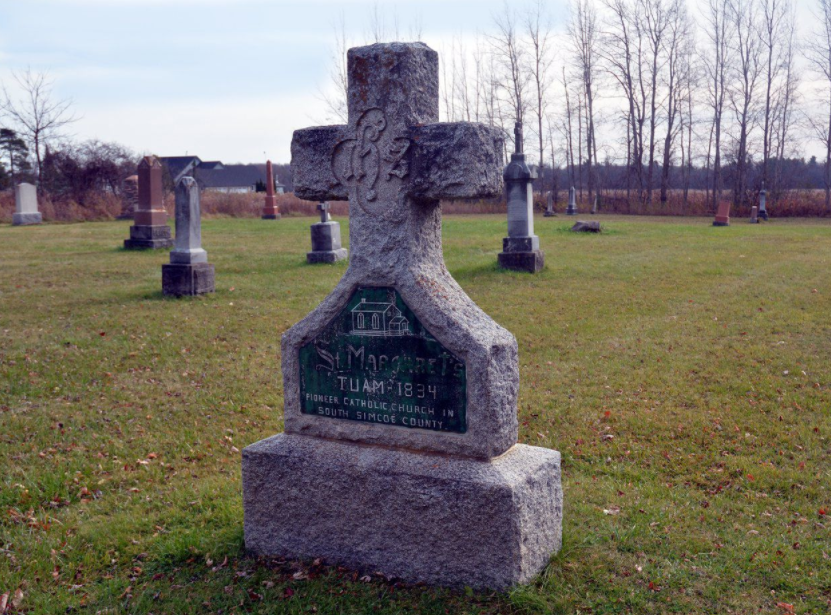A drive down the Third Line of New Tecumseth, just south and east of Tottenham, gives no indication that there was once a thriving small town at the corner of the 10 Sideroad.
It was named Tuam, and was so called because one of the founders named it after “tuaim-da-Ghualaan," his hometown in Ireland.
Early pioneer Patrick Derham named the town and was one of the first settlers in the area arriving in the early 1830s. It didn’t take long for other settlers to arrive, and in 1834 they built the first church.
It was called St. Margaret’s of Scotland Roman Catholic Church and reflected the heritage of the early Scottish and Irish settlers.
Mr. Derham, being an enterprising type of man, opened a general store in 1850.
To really put the town on the map, he established a post office 13 years later, in 1863.
The exact location of those buildings seems to have been lost, although it is possible local residents might know where they once stood.
The church, however, was on the Second Line and its cemetery is still there.
The 10-acre site was the location of the first Roman Catholic church and cemetery in what was then called Tecumseth Township.
It was a wooden church approximately 40 feet by 20 feet in size.
According to an historical plaque on site, the church served 500 parishioners.
That’s an usually high number for the time and location considering people would have had to travel a considerable distance by horse and buggy on muddy roads.
The original 10 acres was reduced by eight acres when the church sold some of the property to a neighbour.
The area thrived and the small church reached the height of its influence in the 1850s.
Judging from historical information on the area, the residents of this town weren’t exactly the most affluent group of people and seemed to arrive on Canadian shores as immigrants fleeing poverty in their homeland.
A second cemetery sits next to St. Margaret’s, however other than a single historical plaque, there is no indication of who is buried there.
The grave markers have long since disappeared with no apparent record of why they were removed or why there is a separate cemetery.
The most likely reason is it was a place for local non-Catholics to be laid to rest.
The church held services for 118 years, with the last service held in 1952.
The church was torn down not long after.
The cemetery has headstones with date as late as the 1940s. Like many early immigrants seeking a better life, residents finally started moving on to new places to seek better opportunities.
The Roman Catholic population started declining in the late 1880s and as Protestant immigrants from Scotland and Ireland started arriving, they built a wooden Methodist church in 1859 called Rich Hill Methodist Church and, later, a more permanent brick building in 1888.
Rich Hill Church is still a thriving and ongoing church.
The opening of an Orange Lodge around the same time indicates a shift in religious preferences in the area, which may have contributed to the earlier settlers leaving for greener pastures.
Tuam may have been slowly buried in time, however the lasting cemetery is a reminder of a time when early settlers braved the hardships of pioneer life to help build a country.
Brian Lockhart, Local Journalism Initiative, New Tecumseth Times



